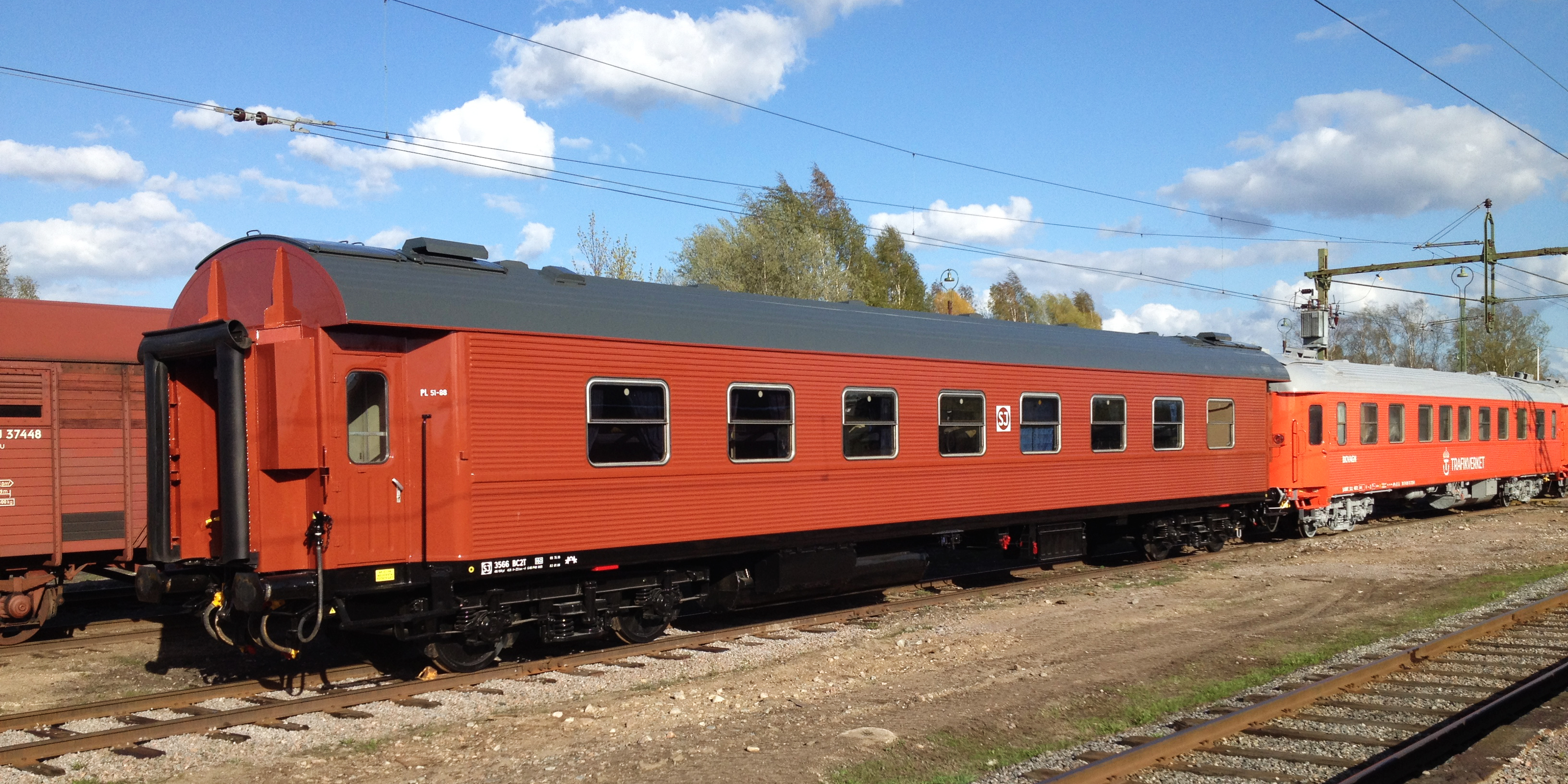
Couchette BC2T 3566
BC2T 3566 is a couchette carriage, but began its life as a seating carriage in 1944. In the 1960s, couchettes became a popular and cheaper alternative to sleeper carriages.
A number of older carriages of types A5, AB7, B8, B15 and WL14 were therefore converted to couchettes between 1971 and 1985. The undercarriage and ceilings, and in some cases the carriage sides, were really the only components that were retained. The ceiling was raised and they were given a completely new interior.
SJ converted the first 20 carriages itself in its workshop in Örebro. The remaining carriages were converted by Kalmar Verkstad (KVAB). During the conversion, SJ retained the carriage bodies, while KVAB guilt new carriage sides. The SJ carriages therefore differed in appearance (corrugated ridges spaced further apart like in the carriages from the 1940s) compared to KVAB carriages (corrugated ridges spaced closer together like in the carriages from the 1960s).
Each compartment has six sleeping berths. The middle berths can be folded down during the day so that the bottom berths can be used as sofas. Toilets and washrooms with sinks are located at either end of each carriage.
In principle, the carriages have been used in all night trains in Sweden and also the ones to Berlin in the 2000s. When not in use as a couchette carriage, it serves perfectly well as a seating carriage. Carriage 3566 is the only museum-preserved couchette carriage in Sweden. It was painted its brown colour in 2014, and now looks like it did when it came out of Kalmar Verkstad in 1975.
Explanation
BC2T is a designation (class) of the wagon type and means:
- BC = Couchette
- 2 = Model 2 in the BC family, which has to do with the interior
- T = The wagon was equipped with a vacuum toilet
- 3566 is the wagon's individual number
Manufactured
ASJ Linköping as a third-class carriage in 1944 (B8B in 1975), converted in 1975 to a couchette at the Kalmar Workshop
Length
23.5 metres
Weight
43 tonnes
Cots
48 cots or 64 seats
Maximum permitted speed
160 km/h